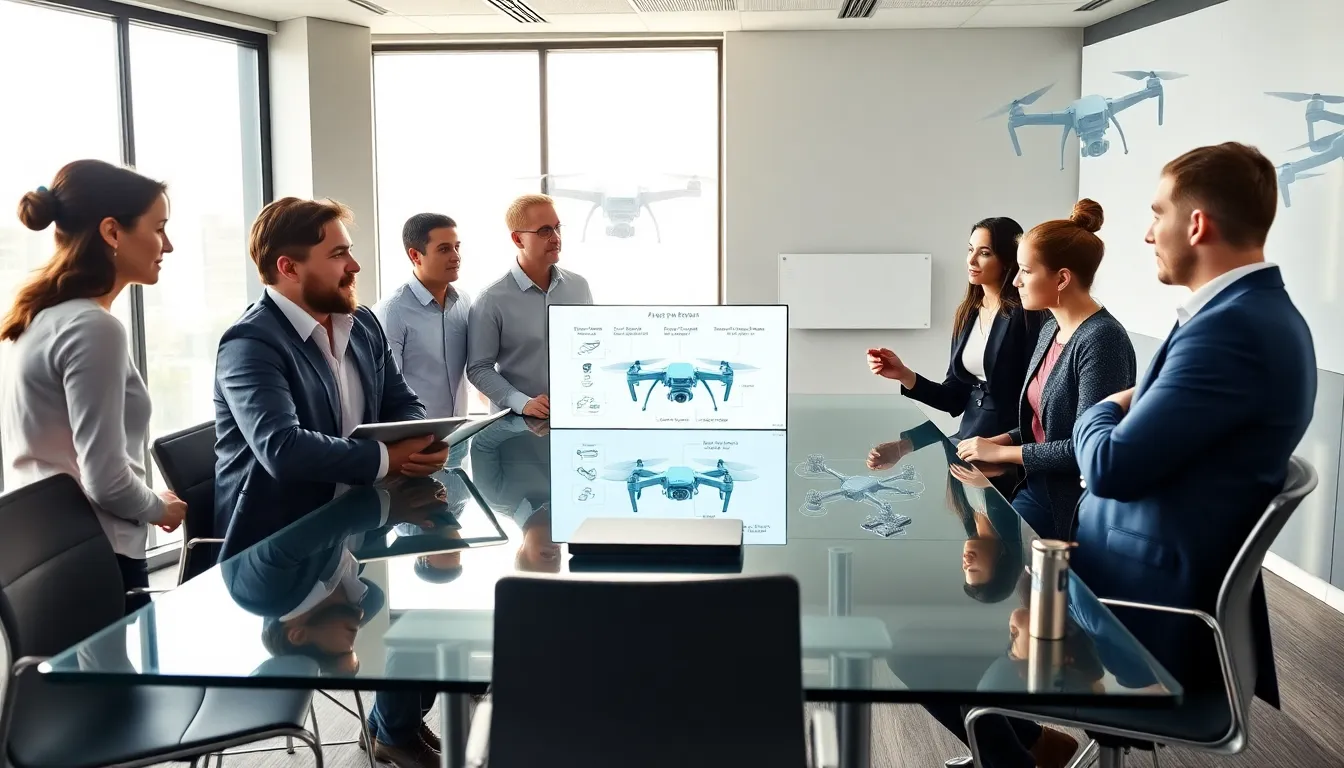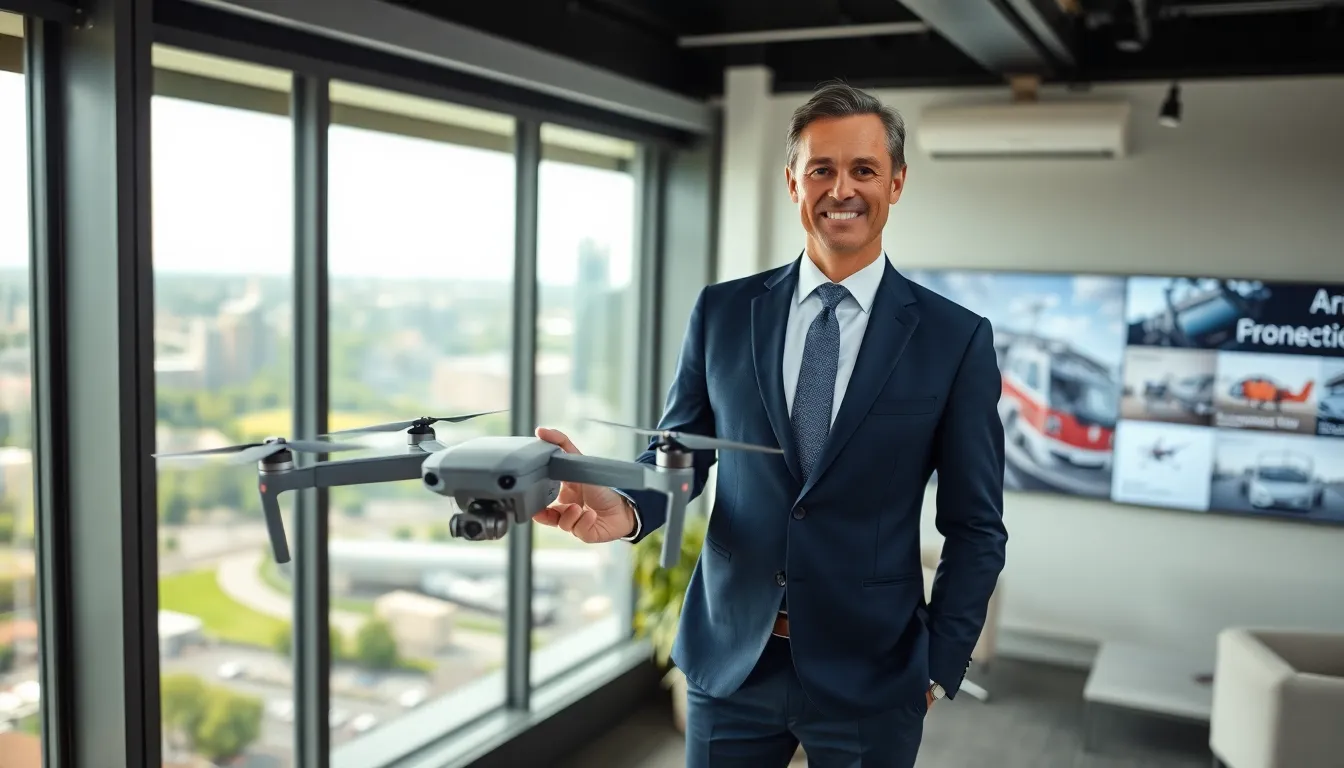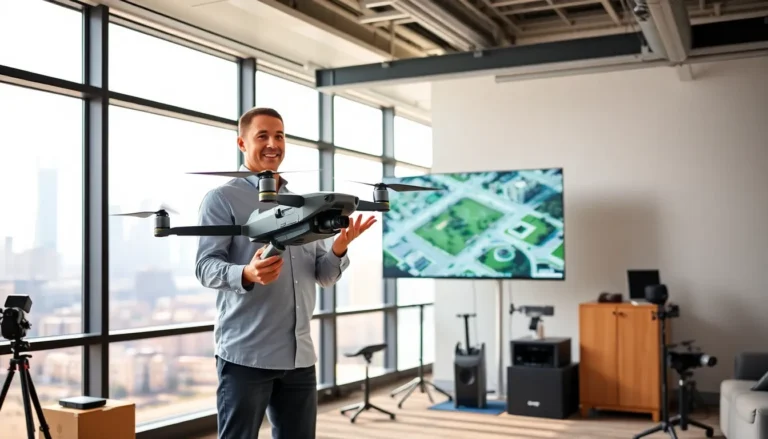Drones. The gadgets that buzz around like overenthusiastic bees, capturing breathtaking aerial views and delivering everything from tacos to textbooks. In the UK, these high-flying marvels have taken off in a big way, not just for fun playdates but as serious tools transforming various industries. But how did these buzzworthy devices come to rule the skies? Whether you’re already a drone aficionado or just curious, buckle up as we jump into the buzz surrounding drones in the UK.
Table of Contents
ToggleOverview Of Drones In The UK

Drones have emerged as game-changers in the UK, increasingly used by both hobbyists and professionals alike. These unmanned aerial vehicles (UAVs) can soar through the skies for various purposes, from capturing stunning photographs to inspecting power lines. In recent years, the UK has witnessed an explosive growth in drone technology. According to industry reports, the UK drone market is expected to grow substantially, reaching billions in revenue over the next few years. This growth reflects an ever-expanding range of applications, as drones become integral to numerous sectors, including agriculture, construction, and emergency services.
The initial fascination with drones stemmed from their ability to access hard-to-reach areas and deliver high-resolution imagery. Open fields, towering skyscrapers, and hard-to-navigate terrains have all become more accessible thanks to these flying tools. Popular brands like DJI have revolutionized the market, offering consumer-friendly drones packed with features that were once the exclusive domain of professionals. With options available for all budgets, it’s no surprise that daydreams of aerial photography have turned into reality for many.
Yet, the rapid rise of drones raises pertinent questions about safety, privacy, and their broader impact on society. As drones become more prevalent, understanding their implications has become essential.
Regulatory Framework For Drones
The emergence of drones in the UK has led to the establishment of a comprehensive regulatory framework to ensure their safe use. The UK Civil Aviation Authority (CAA) is at the forefront of developing and enforcing regulations governing drone operations. Following the introduction of the Drone and Model Aircraft Registration and Education Scheme, all drone operators must register their craft if they weigh more than 250 grams. This rule aims to promote accountability and safe practices among drone enthusiasts.
Plus to registration, drone operators must adhere to specific operational guidelines. For instance, the CAA mandates that drones must not fly above 400 feet and must always be in the operator’s line of sight. These restrictions help minimize potential risks, particularly in regards to manned aircraft, wildlife, and privacy concerns.
The regulations also differentiate between recreational and commercial drone use. Commercial operators must obtain a Permission for Commercial Operation (PfCO) and complete additional training. With an increasing number of industries deploying drones, this regulatory framework is crucial for maintaining safety while enabling innovation.
Applications Of Drones Across Industries
Drones are not just a passing fad in the UK: they have found diverse applications across various industries, revolutionizing how many sectors operate.
Agriculture
In agriculture, for example, drones are becoming essential tools for farmers. Using advanced sensors, they can monitor crop health, survey land, and manage resources more efficiently. Drones equipped with thermal cameras allow farmers to identify areas requiring irrigation or pest control. Enhanced visibility eventually leads to better yields and reduced operational costs.
Construction
Meanwhile, in construction, drones offer a bird’s-eye view of project sites, enabling real-time monitoring and reporting. They can survey large areas in a fraction of the time it would take traditional methods, so improving project timelines and efficiency. High-definition aerial footage can assist in project presentations and progress updates, making communication much clearer among stakeholders.
Emergency Services
Drones have also emerged as vital assets for emergency services. The capability to rapidly assess disaster situations and deliver supplies is invaluable. For instance, they can evaluate flooded regions or locate missing persons in hard-to-reach areas, speeding up response times and saving lives.
As more industries adopt drone technology, their diverse applications highlight their crucial role in modern society.
Challenges And Concerns Surrounding Drone Usage
Even though their many advantages, the use of drones in the UK is not devoid of challenges and concerns. Safety remains a dominant topic, particularly about near misses with manned aircraft and other aerial vehicles. Continuous dialogue among stakeholders is essential to mitigate potential accidents and enhance public safety.
Privacy concerns are also paramount. Many individuals express concerns about drones invading personal space, especially when equipped with high-resolution cameras. Striking a balance between utilizing drones for beneficial purposes and respecting individual privacy is an ongoing debate.
Also, regulatory compliance can pose challenges for operators. As drone technology develops rapidly, staying abreast of changing regulations is vital yet complicated. Non-compliance can lead to hefty fines and legal issues, which no one wants to face. Besides, the environmental impact of drone operations is under scrutiny. With evolving battery technologies and electric propulsion systems, innovations aim to minimize the carbon footprint while maximizing efficiency.
So, while the future looks promising, addressing these obstacles is essential for sustainable growth in the UK’s drone landscape.
The Future Of Drones In The UK
The future of drones in the UK is both exciting and thrilling. As technology progresses, advancements such as artificial intelligence and automation will enhance drone capabilities further. These developments could lead to more autonomous drone operations, allowing them to make decisions based on real-time data.
Besides, the integration of drones into urban environments is becoming more feasible. The concept of drone delivery services is no longer confined to sci-fi films. Companies like Amazon are exploring drone delivery to enhance logistics and efficiency, while other businesses are following suit in various industries.
The development of drone ports within urban frameworks is also on the horizon. These designated areas could help safe drone operations in crowded locations, reducing safety risks and improving overall efficiency.
With increased regulatory clarity, public acceptance, and continued investment in drone technology, the next few years could see drones become ubiquitous in our skies. Soon, the skies over the UK may well be filled with drones buzzing about, not only for recreational enjoyment but as vital components of commercial and industrial operations.





